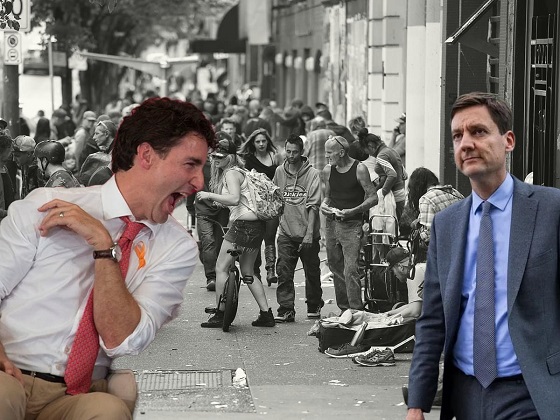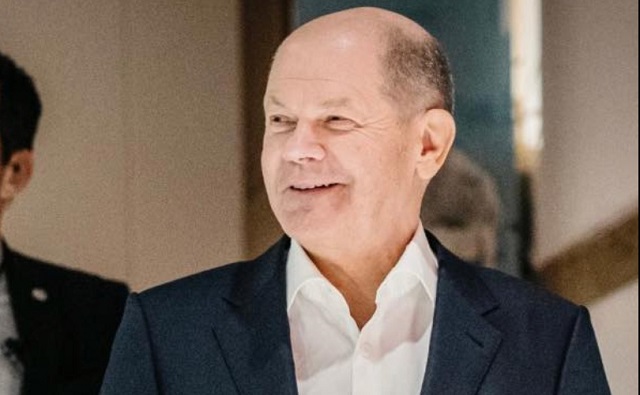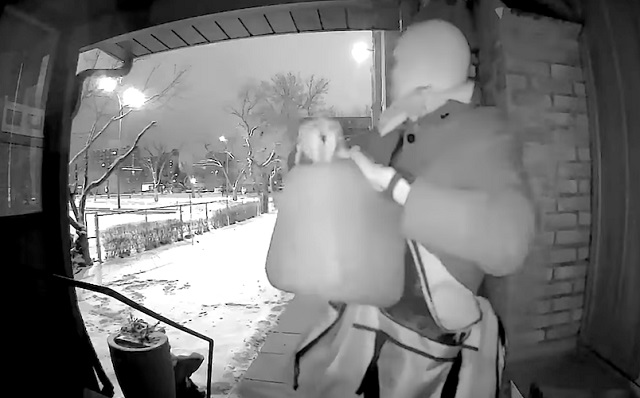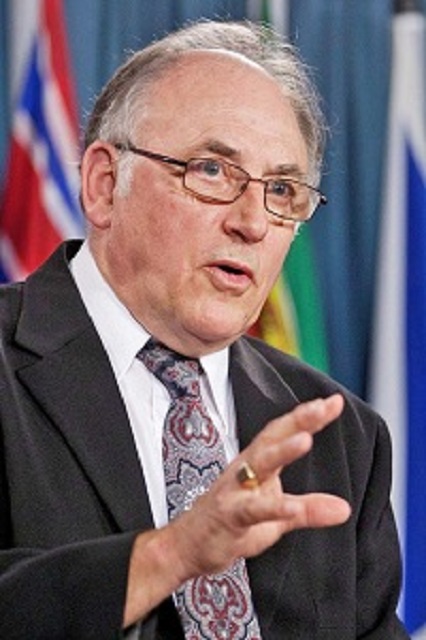Brownstone Institute
The Choice Is Liberty or Lockdown
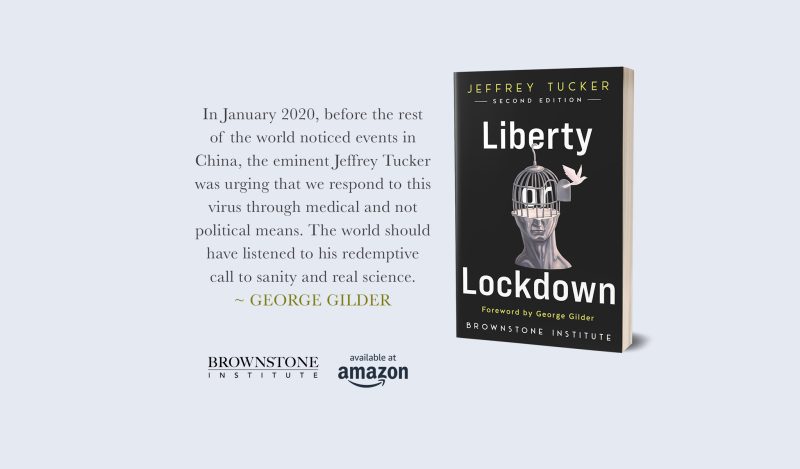
BY
Two years after the first edition, the second edition of Liberty or Lockdown is now in print, just as the US president announced the end of the pandemic. The emergency declaration that excused the mass violation of human rights is still in effect.
The significance of the timing of the first edition of this book is obvious to anyone who has lived through our strange times: September 2020. That was six months following the lockdown of most of the world during which places where people might “congregate” were shut by governments.
The reason was to avoid, mitigate, eliminate maybe, or otherwise diminish the disease impact of the virus that caused Covid. This was before the vaccine came out, before the Great Barrington Declaration, and before data on excess deaths the world over showed vast carnage from these policy decisions.
The state was unleashed on the population as never before, in the name of science. There are no words to describe my outrage then and now.
The onset of lockdowns put me to work trying to understand the thinking, a process which took me back through the history of pandemics, the relationship between infectious disease and freedom, and the origin of lockdown ideology in 2005.
The times during which this book was written were beyond strange. People went full medieval in every way in which that term can be understood. There was public flogging in the form of masking and the abolition of fun, feudalistic segregation and disease shaming, the practical end of most medical care unless it was for Covid, the scapegoating of non-compliers, the neglect and abuse of children, and a turn to other pre-modern forms. All of this became worse once the non-sterilizing vaccines appeared on the market that many if not most people were forced to accept at pains of losing their jobs.
Writing now in September of 2022, I cannot even imagine going through the pain of putting this research together again. I’m very pleased it was done then because now this book survives as a marker that there was dissent, if nothing else. I’ve added no new essays though I’ve written hundreds since then. The second edition should really stand as is.
This was also a period of time – still is today – when vast numbers of people feel betrayed by technology, media, politicians, and even their one-time intellectual heroes. It is a time of grave destruction with still-broken supply chains, roaring inflation, mass cultural demoralization, labor market confusions, shattered lives of young and old, and terrible uncertainty about the future.
When I put this book to bed in 2020, I had hoped we were near the end of this disaster. How wrong I was! Let us hope, too, that it is a period of rebuilding, however quietly it is taking place.
Starting Brownstone Institute is part of that for me. So many others have joined. Today we published articles from all over the world since so many around the world have shared in this suffering. What will it take to emerge from the other side?
From my point of view, it is not complicated. We need a renewed appreciation of human liberty and rights. That’s it. That is the whole prescription. It does not sound hard but apparently it is. This task will likely consume the rest of our lives.
Jeffrey Tucker
September 2022
Introduction to the Portuguese Edition (2021)
As I write, and much to my astonishment and sadness, the world is still in chains. These chains have been created by governments. They bind their citizens’ choices and actions in the name of virus control. I had expected the folly of lockdowns to end within weeks after their imposition, once the data were in on the demographics of severe outcomes. But through a terrible combination of factors – government and public ignorance and fear, media frenzy, big tech censorship, the outsized voice of fake lockdown science, and an unwillingness on the part of the lockdown industry to admit error – they continued for a full year and continue today.
On the day I’m writing, Paris and Berlin are once again under lockdown, Sao Paulo is being brutalized, and ever larger parts of Eastern and Western Europe are experimenting with a third round of failure. Anthony Fauci in the US is all over the media essentially denying that human immunity exists in any meaningful sense, kids are still being kept out of school, businesses are being forced to engage in preposterous rituals just to survive, most members of the ruling class parade in masks in a theatrical affectation that they are following the science, and a weary people are massively divided between those who want to believe the authorities and those who have lost all credulity in public health.
Our communities are shattered, our houses of worship in diaspora, our spirits crushed, and our expectations for the good life in tatters.
Also pouring in are the devastating data on the consequences of lockdown. The economic costs are stupefying, beyond anything we imagined we would ever see. The cultural costs are too, with arts and music devastated, along with the industries that support them. The most interesting and possibly counterintuitive costs are related to public health itself: the missed cancer screenings, the missed appointments, the prevalence of suicide ideation, the record drug overdoses, the alcoholism, the mental and emotional despair. As for settled matters of human rights – the freedom to speak, travel, worship, learn, trade – they are suddenly all in question.
It’s true that parts of the world are entirely open, and thank goodness for them. These places are experiencing no worse outcomes, and often much better outcomes, from the severe aspects of this disease than those who are still experimenting with rolling lockdowns. More evidence pours in by the day: this is a normal virus, with natural immunity, with distinct characteristics that should be mitigated by medical professionals one person at a time – not managed by politicians and their advisors with agendas that have nothing to do with public health.
I’ve been involved in the debate over the government’s role in disease control for at least 15 years. Until last year, the consensus of the experts was that governments have a very limited role, simply because of the capacity of pathogens to outsmart even the best intentions of the powerful and their plans. In the golden age of public health in the 20th century, such brutal methods as public quarantines, shutdowns, mandatory masks, closures, travel restrictions, and universal stay-at-home orders were specifically ruled out as counterproductive, overly disruptive, and futile for achieving the task of minimizing damage from new pathogens. The powers to do all this have been there for the better part of 15 years or possibly for longer but they were not deployed for good reasons.
For reasons that will become increasingly clear over time, 2020 became the year of the great experiment. Suddenly, “nonpharmaceutical interventions” would replace our laws, our settled traditions of liberty, and love of peace and prosperity, and even the ideals of the Enlightenment itself. We put fear above rationality, division above community, power above rights, wild experiments above settled science, and the intellectual pretensions of a tiny ruling class above the interests of the social order.
It was all so shocking and inexplicable that most of the world’s population sat through month after month in a state of confused delirium, attached to screens with pundits preaching to us daily that all of this was necessary and good. And yet, we all recall now that humanity has always lived amidst pathogens new and old. We dealt with them and cobbled together an implicit social contract around infectious disease: we agreed nonetheless to build civilization and experience social progress, treating sickness and death as something to mitigate within the context of human rights. For the first time ever, we tried a global lockdown as scripted by scientific elites.
But now writing one year later, I’m pleased to say that the days of shock and awe are over, gradually being replaced by disillusionment with the ruling class and incredulity toward those who did this to us. There is no power on earth strong enough or rich enough to suppress truth. Truth exists within the realm of ideas, and that is a realm of infinite reproducibility, malleability, and portability, subject only to the willingness of the curious and courageous to tell that truth in every possible way to as many people as possible in every venue available. This is how truth wins, reaching one mind at a time.
We’ve all been tested during this last year. What are our intellectual commitments? Do we really believe them or have we adopted them for career reasons? What are the pressures to which we will succumb in order to relinquish our principles for prestige? How much are we willing to give up in order to fight for a cause larger than ourselves? I’ve been surrounded by heroes this year who have inspired me – God bless them – and others who were unwilling to step up when their voices were most needed, much to my sadness.
That aside, let’s all admit something: part of each of us has been broken by these lockdowns. No one wants to live in a world in which our essential rights and liberties can be granted or taken away based on the judgment calls of a handful of scientists who have no regard for our traditions of law. That’s called tyranny. We now know how terrible it is. And how futile. How demoralizing. How utterly ghastly and unconscionable.
I somehow always come around to silver linings, not only because it is my personality but also because they always exist. The silver lining is that much of the world has lived through the apotheosis of statism, that ugly ideology that posits that force is a better way to organize the world than choice. We dabbled in it as societies for the better part of 100 years and then suddenly in one year we went full on, just as a test. That test completely failed. We know it first hand. As I write, I’m confident that we’ve seen the worst of it.
Now is our chance – right now – to choose another path. We don’t need to work out every detail. We don’t need an alternative plan. And it’s not just about getting a new set of political leaders. What we need is a different philosophy. I humbly suggest that the philosophy that built modern civilization – that which we once called liberalism – will do just fine as a base line. Let us believe it, rally around it, institutionalize it, protect it, and fight for it. In doing so, we are not just working in our own self-interest but also in the common good of all.
Never lockdowns. Never again.
Brownstone Institute
A Coup Without Firing a Shot

From the Brownstone Institute
BY
We all have a different starting place and journey but each of us has the following in common. We’ve realized that official sources, the ones we’ve trusted in the past, are not going to make any sense of the above for us. We have to seek out alternatives and put the story together ourselves. And this we must do because the only other choice is to accept that all of the above consists of a random series of disconnected and pointless events, which is surely not true.
The last few years can be tracked at two levels: the physical reality around us and the realm of the intellectual, mental, and psychological.
The first level has presented a chaotic narrative of the previously unthinkable. A killer virus that turned out to be what many people said it was in February 2020: a bad flu with a known demographic risk best treated with known therapeutics. But that template and the ensuing campaign of fear and emergency rule gave rise to astonishing changes in our lives.
Social functioning was wholly upended as schools, businesses, churches, and travel were ended by force. The entire population of the world was told to mask up, despite vast evidence that doing so achieved nothing in terms of stopping a respiratory virus.
That was followed by a breathtaking propaganda campaign for a shot that failed to live up to its promise. The cure for the disease itself caused tremendous damage to health including death, a subject about which everyone cared intensely before the shot and then strangely forgot about after.
Protests against the goings-on were met with media smears, shutdowns, and even the cancellation of bank accounts. However, and simultaneously, other forms of protest were encouraged, insofar as they were motivated by a more proper political agenda against structural injustices in the old system of law and order. That was a strange confluence of events, to say the least.
In the midst of this, which was wild enough, came new forms of surveillance, censorship, corporate consolidation, an explosion of government spending and power, rampant and global inflation, and hot wars from long-running border conflicts in two crucial regions.
The old Declarations of rules on the Internet put free speech as a first principle. Today, the hosting website of the most famous one, signed by Amnesty International and the ACLU, is gone, almost as if it never existed. In 2022, it came to be replaced by a White House Declaration on the Future of the Internet, that extols stakeholder control as the central principle.
All the while, once-trusted sources of information – media, academia, think tanks – have steadfastly refused to report and respond in truthful ways, leading to a further loss of public trust not just in government and politics but also in everything else, including corporate tech and all the higher order sectors of the culture.
Also part of this has been a political crisis in many nations, including the use of sketchy election strategies justified by epidemiologic emergency: the only safe way to vote (said the CDC) is absentee via the mails. Here we find one of many overlapping parallels to a scenario hardly ever imagined: infectious disease deployed as a cover for political manipulation.
Crucially and ominously, all of these mind-blowing developments took place in roughly similar ways the world over, and with the same language and model. Everywhere people were told “We are all in this together,” and that social distancing, masking, and vaxxing was the correct way out. Media was also censored everywhere, while anti-lockdown protestors (or even those who simply wanted to worship together in peace) were treated not as dissidents to be tolerated but irresponsible spreaders of disease.
Can we really pretend that all of this is normal, much less justified? The exhortation we receive daily is that we can and must.
Really? At what point did you realize that you had to start thinking for yourself?
We all have a different starting place and journey but each of us has the following in common. We’ve realized that official sources, the ones we’ve trusted in the past, are not going to make any sense of the above for us. We have to seek out alternatives and put the story together ourselves. And this we must do because the only other choice is to accept that all of the above consists of a random series of disconnected and pointless events, which is surely not true.
That leads to the second layer of comprehension; the intellectual, mental, and psychological. Here is where we find the real drama and incalculable difficulties.
At the dawn of lockdowns, what appeared to be a primitive public health error seemed to be taking place. It seemed like some scientists at the top, who gained an implausible amount of influence over government policy, had forgotten about natural immunity and were under the impression that it was good for health to stay home, be personally isolated, avoid exercise, and eat only takeout food. Surely such preposterous advice would be revealed soon as the nonsense it was.
How in the world could they be so stupid? How did they gain so much influence, not just nationally but all over the world? Did the whole of humanity suddenly forget about all known science in every field from virology to economics to psychology?
As time went on, more and more anomalies appeared that made that judgment seem naïve. As it turns out, what was actually taking place had something to do with a move on the part of security and intelligence services. It was they who were given rule-making authority on March 13, 2020, and that’s why so much of what we needed to know was and is considered classified.
There were early initial reports that the virus itself might have been leaked from a US-backed lab in Wuhan, which introduces the entire subject of the US bioweapons program. This is a very deep rabbit hole itself, thoroughly exposed in Robert F. Kennedy, Jr.’s The Wuhan Cover-Up. There was a reason that topic was censored: it was all true. And as it turns out, the vaccine itself was able to bypass the normal approval process by slipping through under the cover of emergency. In effect, it came pre-approved by the military.
As the evidence continues to roll in, more and more rabbit holes appear, thousands of them. Each has a name: Pharma, CCP, WHO, Big Tech, Big Media, CBDCs, WEF, Deep State, Great Reset, Censorship, FTX, CISA, EVs, Climate Change, DEI, BlackRock, and many more besides. Each of these subject areas has threads or thousands of them, each connecting to more and to each other. At this point, it is simply not possible for a single person to follow it all.
To those of us who have been steeped in following the revelations day by day, and trying to keep up with putting them together into a coherent model of what happened to us, and what is still going on, the ominous reality is that the traditional understanding of rights, liberties, law, business, media, and science were dramatically overthrown in the course of just a few months and years.
Nothing operates today as it did in 2019. It’s not just that functioning broke. It was broken and then replaced. And the surreptitious coup d’état with no shots fired is still ongoing, even if that is not the headline.
Of this fact, many of us today are certain. But how common is this knowledge? Is it a vague intuition held by many members of the public or is it known in more detail? There are no reliable polls. We are left to guess. If any of us in 2019 believed we had our finger on the pulse of the national mood or public opinion generally, we certainly do not anymore.
Nor do we have access to the inner workings of government at the highest levels, much less the conversations going on among the winners of our age, the well-connected ruling elites who seemed to have gamed the entire system for their own benefit.
It’s so much easier to regard the whole thing as a giant confusion or accident on grounds that only cranks and crazies believe in conspiracy theories. The trouble with that outlook is that it posits something even more implausible; that something this gigantic, far-reaching, and dramatic could have happened with no real intentionality or purpose or that it all fell together as a huge accident.
Brownstone Institute has published more than 2,000 articles and 10 books exploring all over the above topics. Other venues and friends are out there helping us with this research and discovery, issue by issue. Even so, a great deal of responsibility falls on this one institution, the main work of which is providing support for dissident and displaced voices, which is implausible since it was only founded three years ago. We are deeply grateful for our supporters and would welcome you to join them.
As for the intellectuals we once revered for their curiosity and wisdom, most seem to have gone into hiding, either unable to adapt to the new realities or just unwilling to risk their careers by exploring hard topics. It’s understandable but still tragic. Most are happy to pretend like nothing happened or celebrate the change as nothing but progress. As for journalists, the New York Times publishes daily commentaries dismissing the Constitution as a dated anachronism that has to go and no one thinks much about it.
There is a lot to sort out. So much has changed so quickly. No sooner than the dust seems to be settling from one upheaval, there is another and then another. Keeping up with it all causes a level of psychological brain scramble on a scale we’ve never previously experienced.
It’s easier to wait for the historians to tell the next generation what happened. But maybe, just maybe, by stepping up and telling the story as we see it in real time, we can make a difference in stopping this madness and restoring some sane and normal freedom back to the world.
Brownstone Institute
Is the Overton Window Real, Imagined, or Constructed?
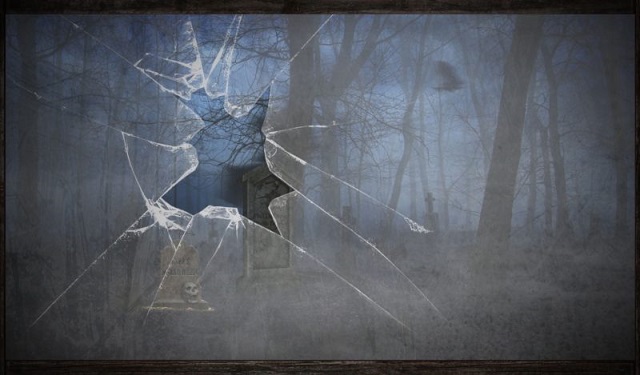
From the Brownstone Institute
BY
Ideas move from Unthinkable to Radical to Acceptable to Sensible to Popular to become Policy.
The concept of the Overton window caught on in professional culture, particularly those seeking to nudge public opinion, because it taps into a certain sense that we all know is there. There are things you can say and things you cannot say, not because there are speech controls (though there are) but because holding certain views makes you anathema and dismissable. This leads to less influence and effectiveness.
The Overton window is a way of mapping sayable opinions. The goal of advocacy is to stay within the window while moving it just ever so much. For example, if you are writing about monetary policy, you should say that the Fed should not immediately reduce rates for fear of igniting inflation. You can really think that the Fed should be abolished but saying that is inconsistent with the demands of polite society.
That’s only one example of a million.
To notice and comply with the Overton window is not the same as merely favoring incremental change over dramatic reform. There is not and should never be an issue with marginal change. That’s not what is at stake.
To be aware of the Overton window, and fit within it, means to curate your own advocacy. You should do so in a way that is designed to comply with a structure of opinion that is pre-existing as a kind of template we are all given. It means to craft a strategy specifically designed to game the system, which is said to operate according to acceptable and unacceptable opinionizing.
In every area of social, economic, and political life, we find a form of compliance with strategic considerations seemingly dictated by this Window. There is no sense in spouting off opinions that offend or trigger people because they will just dismiss you as not credible. But if you keep your eye on the Window – as if you can know it, see it, manage it – you might succeed in expanding it a bit here and there and thereby achieve your goals eventually.
The mission here is always to let considerations of strategy run alongside – perhaps even ultimately prevail in the short run – over issues of principle and truth, all in the interest of being not merely right but also effective. Everyone in the business of affecting public opinion does this, all in compliance with the perception of the existence of this Window.
Tellingly, the whole idea grows out of think tank culture, which puts a premium on effectiveness and metrics as a means of institutional funding. The concept was named for Joseph Overton, who worked at the Mackinac Center for Public Policy in Michigan. He found that it was useless in his work to advocate for positions that he could not recruit politicians to say from the legislative floor or on the campaign trail. By crafting policy ideas that fit within the prevailing media and political culture, however, he saw some successes about which he and his team could brag to the donor base.
This experience led him to a more general theory that was later codified by his colleague Joseph Lehman, and then elaborated upon by Joshua Treviño, who postulated degrees of acceptability. Ideas move from Unthinkable to Radical to Acceptable to Sensible to Popular to become Policy. A wise intellectual shepherd will manage this transition carefully from one stage to the next until victory and then take on a new issue.
The core intuition here is rather obvious. It probably achieves little in life to go around screaming some radical slogan about what all politicians should do if there is no practical means to achieve it and zero chance of it happening. But writing well-thought-out position papers with citations backed by large books by Ivy League authors and pushing for changes on the margin that keep politicians out of trouble with the media might move the Window slightly and eventually enough to make a difference.
Beyond that example, which surely does tap into some evidence in this or that case, how true is this analysis?
First, the theory of the Overton window presumes a smooth connection between public opinion and political outcomes. During most of my life, that seemed to be the case or, at least, we imagined it to be the case. Today this is gravely in question. Politicians do things daily and hourly that are opposed by their constituents – fund foreign aid and wars for example – but they do it anyway due to well-organized pressure groups that operate outside public awareness. That’s true many times over with the administrative and deep layers of the state.
In most countries, states and elites that run them operate without the consent of the governed. No one likes the surveillance and censorial state but they are growing regardless, and nothing about shifts in public opinion seem to make any difference. It’s surely true that there comes a point when state managers pull back on their schemes for fear of public backlash but when that happens or where, or when and how, wholly depends on the circumstances of time and place.
Second, the Overton window presumes there is something organic about the way the Window is shaped and moves. That is probably not entirely true either. Revelations of our own time show just how involved are major state actors in media and tech, even to the point of dictating the structure and parameters of opinions held in the public, all in the interest of controlling the culture of belief in the population.
I had read Manufacturing Consent (Noam Chomsky and Edward Herman; full text here) when it came out in 1988 and found it compelling. It was entirely believable that deep ruling class interests were more involved than we know about what we are supposed to think about foreign-policy matters and national emergencies, and, further, entirely plausible that major media outlets would reflect these views as a matter of seeking to fit in and ride the wave of change.
What I had not understood was just how far-reaching this effort to manufacture consent is in real life. What illustrates this perfectly has been media and censorship over the pandemic years in which nearly all official channels of opinion have very strictly reflected and enforced the cranky views of a tiny elite. Honestly, how many actual people in the US were behind the lockdowns policy in terms of theory and action? Probably fewer than 1,000. Probably closer to 100.
But thanks to the work of the Censorship Industrial Complex, an industry built of dozens of agencies and thousands of third-party cutouts including universities, we were led to believe that lockdowns and closures were just the way things are done. Vast amounts of the propaganda we endured was top down and wholly manufactured.
Third, the lockdown experience demonstrates that there is nothing necessarily slow and evolutionary about the movement of the Window. In February 2020, mainstream public health was warning against travel restrictions, quarantines, business closures, and the stigmatization of the sick. A mere 30 days later, all these policies became acceptable and even mandatory belief. Not even Orwell imagined such a dramatic and sudden shift was possible!
The Window didn’t just move. It dramatically shifted from one side of the room to the other, with all the top players against saying the right thing at the right time, and then finding themselves in the awkward position of having to publicly contradict what they had said only weeks earlier. The excuse was that “the science changed” but that is completely untrue and an obvious cover for what was really just a craven attempt to chase what the powerful were saying and doing.
It was the same with the vaccine, which major media voices opposed so long as Trump was president and then favored once the election was declared for Biden. Are we really supposed to believe that this massive switch came about because of some mystical window shift or does the change have a more direct explanation?
Fourth, the entire model is wildly presumptuous. It is built by intuition, not data, of course. And it presumes that we can know the parameters of its existence and manage how it is gradually manipulated over time. None of this is true. In the end, an agenda based on acting on this supposed Window involves deferring to the intuitions of some manager who decides that this or that statement or agenda is “good optics” or “bad optics,” to deploy the fashionable language of our time.
The right response to all such claims is: you don’t know that. You are only pretending to know but you don’t actually know. What your seemingly perfect discernment of strategy is really about concerns your own personal taste for the fight, for controversy, for argument, and your willingness to stand up publicly for a principle you believe will very likely run counter to elite priorities. That’s perfectly fine, but don’t mask your taste for public engagement in the garb of fake management theory.
It’s precisely for this reason that so many intellectuals and institutions stayed completely silent during lockdowns when everyone was being treated so brutally by public health. Many people knew the truth – that everyone would get this bug, most would shake it off just fine, and then it would become endemic – but were simply afraid to say it. Cite the Overton window all you want but what is really at issue is one’s willingness to exercise moral courage.
The relationship between public opinion, cultural feeling, and state policy has always been complex, opaque, and beyond the capacity of empirical methods to model. It’s for this reason that there is such a vast literature on social change.
We live in times in which most of what we thought we knew about the strategies for social and political change have been blown up. That’s simply because the normal world we knew only five years ago – or thought we knew – no longer exists. Everything is broken, including whatever imaginings we had about the existence of this Overton window.
What to do about it? I would suggest a simple answer. Forget the model, which might be completely misconstrued in any case. Just say what is true, with sincerity, without malice, without convoluted hopes of manipulating others. It’s a time for truth, which earns trust. Only that will blow the window wide open and finally demolish it forever.
-

 Censorship Industrial Complex1 day ago
Censorship Industrial Complex1 day agoNow We Are Supposed to Cheer Government Surveillance?
-

 Alberta1 day ago
Alberta1 day agoRed Deer Doctor critical of Alberta’s COVID response to submit report to Danielle Smith this May
-

 conflict1 day ago
conflict1 day agoCol. Douglas Macgregor torches Trump over support for bill funding wars in Ukraine and Israel
-
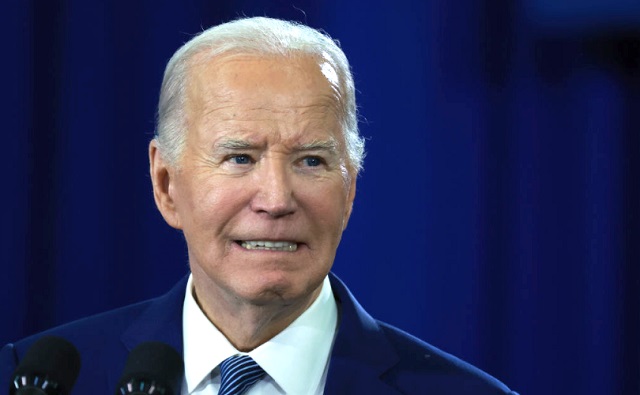
 International1 day ago
International1 day agoBiden admin expands Title IX to include ‘gender identity,’ sparking conservative backlash
-

 Business5 hours ago
Business5 hours agoTaxpayers criticize Trudeau and Ford for Honda deal
-

 Alberta1 day ago
Alberta1 day agoAlberta’s baby name superstar steals the show again
-

 Business8 hours ago
Business8 hours agoDon’t be fooled by high-speed rail
-

 COVID-192 days ago
COVID-192 days agoInquiry shows Canadian gov’t agencies have spent $10 million on social media ads for COVID jabs



